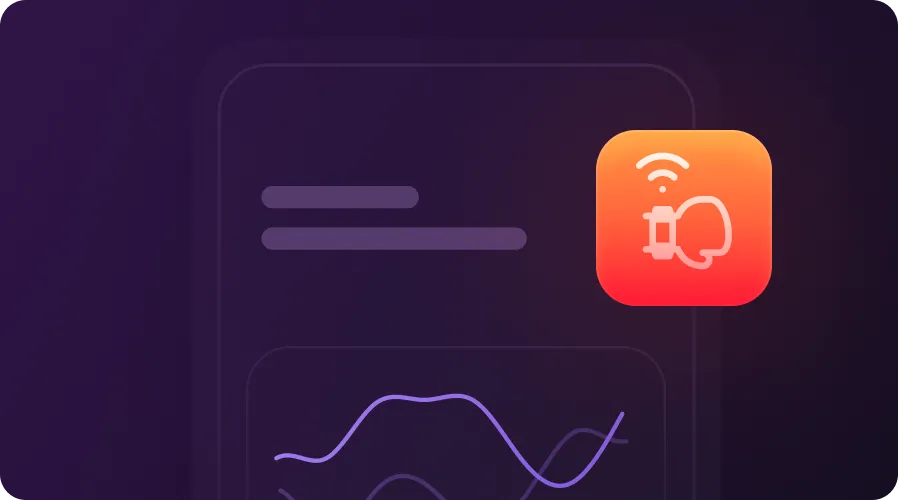Understanding the Software Development Life Cycle

The mobile apps market is rapidly growing. According to Grand View Research, the global mobile app market was evaluated at approximately USD 253 billion in 2023 and is going to grow with a 14.3% CAGR by 2030. That’s why the need for qualified mobile development specialists is so relevant today.
At the same time, one of the key features of a competent specialist is knowledge of the software development life cycle (SDLC) and which of the existing models is best to use in a specific project. The following article will overview the most popular SDLC models and explain where to apply them for the best results.
What is the Software Development Life Cycle (SDLC)?
The software development lifecycle is a methodology that guides the development team during the app creation process. Each of the development life cycle phases has its aims, timeframes, and challenges. Yet, a systemized approach toward software development ensures that the final product is of the highest quality.
In comparison, there are other approaches to software development. For example, development teams can choose from the following options:
- Application lifecycle management. It has a broader scope outside of the actual development process. It can include several SLDC development life cycle stages inside.
- Software testing lifecycle. This method emphasizes debugging and elimination of possible errors in the product.
- Product development lifecycle. This strategy includes market and product promotion after its development is complete.
What Is the Purpose of the Software Development Life Cycle (SDLC)?
The SDLC’s clear division into development cycle stages ensures that software is developed in a controlled environment. The systematic approach helps to avoid such challenges as:
- Budget breaches.
- Project overruns and crunches.
- Failure to meet the requirements.
- Expired deadlines.
Creative freedom is important during the software development process. Yet, the SDLC approach ensures that all the creativity and revolutionary solutions are channeled constructively.
While following the life cycle of software development, each team member knows what task they should do and its deadline.
What are the 7 Phases of SDLC?
There are seven common SDLC phases:
- Requirements analysis
- Planning
- Design
- Development
- Testing
- Deployment
- Maintenance
Let’s consider them in more detail.
Requirements Analysis
It is the initial stage at which the developer's team evaluates the required features for the app. It defines how long the app will be in development, the budget’s size, and the deadlines.
This step answers such questions as:
- What is the objective of the app?
- Is it an upgrade or a brand-new software?
- What are the expected results?
Planning
The project can be planned after its goals and desired results are established. Planning in SDLC defines the technological stack and project roles. The project roadmap is also developed during the planning phase of SDLC.
Design
The software blueprint is created during the design stage. Ideas turn into features, architecture, and UI/UX design. Designing also includes consideration of the software's platforms and security as a part of SDLC processes.
Design can undergo several iterations before reaching its final look. During this phase, teams usually create a software prototype to see how all the features work together. This phase concludes with design document specification—a text description of the app’s functionality to share with stakeholders and within the team.
Development
Development is the long-lasting of the SDLC steps. During this stage, the team implements planned features and functionality into actual software. Tools for progress tracking and version control, such as Git, are common in the software development stage.
Testing
Testing comes after the implementation phase in SDLC. It is a rigorous process during which all software elements are evaluated. Testing can include:
- Performance testing.
- Security testing.
- Integration testing.
- Alpha and beta testing, and so on.
The result of the testing and debugging software development cycle phases should be a product meets its specifications and is ready for the commercial environment.
Deployment
Usually, the apps undergo testing and development in a secluded, special environment. Deployment implies transferring the software to the commercial space. The deployment phase includes final testing of the working product and gathering feedback from a limited audience.
The product is ready for full-fledged commercial use when the software development stages are over.
Maintenance
Maintenance is the final stage of the SDLC cycle. It includes software updates, security, and performance optimization. An upgrade or upscale of the software may be required in the future. In this case, the SDLC begins from the first stage, and the major update undergoes all the steps mentioned.
Most Common SDLC Models
The SDLC standards are common across the industry and development teams. However, there are different SDLC models. Each model serves its own purpose and offers a different order in which the different phases are performed.

SDLC Agile Model
The Agile SDLC model is the hallmark of modern industry. This model implies dividing the bigger tasks into smaller chunks and working on their implementation. The Agile method emphasizes communication between cross-functional teams and stakeholders.
Agile also implies frequent feedback gathering and analysis. Rigorous quality control is also an integral part of the Agile model.
SDLC Big Bang Model
The Big Bang model is an almost informal approach to the SDLC cycle. It ignores any planning or assessment and jumps straight into the coding. Such an approach is more risky than others. However, the model works best if delivery time is critical.
The Big Bang model can work for you if you wish to experiment or test waters in new markets.
SDLC DevOps Model
DevOps is a combination of development (Dev) and operations (Ops) teams to streamline the delivery of software products. The combined practices require service providers of highly skilled specialists. The main DevOps principles are continuous integration and delivery at the enterprise software development level. These methods help automate the process and streamline management tasks.
The DevOps model can strain the budget. However, the result is worth the cost. The DevOps SDLC cycle ensures that the product is in a deployable state and can be swiftly modified.
SDLC Iterative Model
An Iterative model is another representative SDLC cycle. Unlike the Agile model, iterative SDLC does not require continuous customer involvement. Besides, the iterative model has a more defined structure.
The Iterative model implies iterating the software and making changes between the cycles. Such an approach works well for expanded teams and allows the desired results to be achieved without failing deadlines or breaching the budget.
SDLC Lean Model
The Lean model is one of the oldest SDLC cycles that has persisted until today. It aims to achieve maximum efficiency in resource management. Unlike Agile, it focuses on the highest possible quality instead of close and consistent communication with the client.
It also takes a broader than Iterative model approach and improves the overall development process rather than the product itself. Lean is more philosophy than a precise model. As an SDLC model, Lean will ensure the quality of the product and client satisfaction before everything else.
SDLC Spiral Model
The Spiral model is a combination of Iterative and Waterfall models (this one will be discussed below), taking the best features from both approaches. The model consists of spirals, and each spiral has the following steps:
- Planning
- Risk analysis
- Development
- Testing
Such an approach allows risk mitigation at the early stage of the project. While being time-consuming, the Spiral model can be a fail-proof net for your project.
SDLC Waterfall Model
If you are looking for something straightforward and easy to manage—the Waterfall model is your choice. It takes the SDLC structure at face value and follows each step consecutively. The Waterfall model has its risks. It is rigid, and if changes or feedback appear in later stages, it will be hard to implement them. At the same time, the Waterfall model struggles with scalability.
On the other hand, it can spare the headache of complex management and task delegation.
Conclusion
Software development is a complex process that requires structure and precision. The Software Development Lifecycle provides such a structure. In seven steps, a software development team can clearly see goals and meet the client’s requirements.
Various SDLC models fit different needs and project scopes, and we know how to work with all of them. If you need specialists for custom software solutions, we are ready to answer your call and create a high-quality product. Contact us to discuss your project in detail.
FAQ
The SDLC is a structured approach used by development teams to plan, create, test, and deploy software. It ensures the software is built efficiently and meets the required quality.
SDLC helps prevent issues like going over budget, missing deadlines, or not meeting project requirements. It ensures the process is organized, reducing risks and improving the quality of the final product.
The seven phases are: Requirements Analysis, Planning, Design, Development, Testing, Deployment, and Maintenance. Each phase has a specific role in building the software.
The testing phase ensures that the software meets all requirements and functions properly before it’s deployed for use. It includes performance, security, and integration tests.
Connect with us
.webp)
We are a tech partner that delivers ingenious digital solutions, engineering and vertical services for industry leaders powered by vetted talents.





.webp)